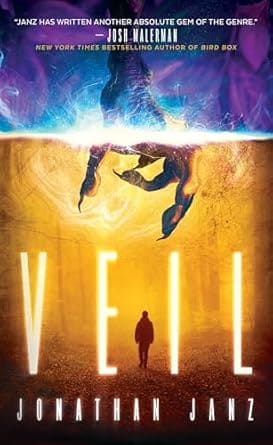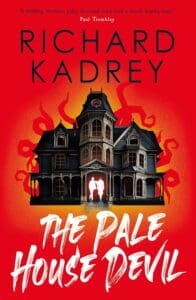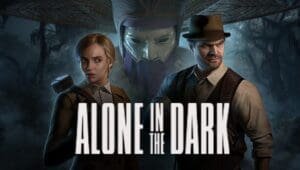
Synopsis:
It begins at night. People vanish from parks and city streets. Then in broad daylight, they’re dragged screaming into the woods, into the water, into the sky. People take refuge in their homes, but still the invisible creatures come, ripping people away from their horrorstruck loved ones. Spouses. Parents. Children. Nowhere is safe and no defense can stop them. Because nothing can save you from what you can’t see.
High school teacher John Calhoun loses his son the first night. A day later, they take his wife. For two months, he and his thirteen-year-old daughter manage to survive, but in the end, she is abducted too. In John’s darkest moment, he meets a motley group of survivors who have a secret: a near-fatal car accident has given one of them the ability to detect what normal human eyesight cannot.
The survivors believe they can replicate the brain injury that will enable them to see the creatures. To discover how they’re invading our world. To fight them. Desperate to save his family, John volunteers. And after the veil of invisibility is lifted, he and his new friends will risk everything to achieve the impossible: enter an alien world and bring their loved ones back.
Review:
A novel about aliens that allows us to glimpse the best and worst of humanity, Jonathan Janz’s “Veil,” is an action-packed, nerve-fraying, brain-sizzling, sci-fi horror triumph. I only started reading Janz about 5 months ago, and this is my fourth by him so far- it’s also the fourth time that he has blown me away, this time, literally to another dimension. I’d read the man’s shopping list. Gorgeous writing delivered alongside break-neck, whiplash-inducing pacing and one of my favourite protagonists, well ever, “Veil,” is a novel full of heart and love and hope- for people, for stories, for humanity to do better- and I for one would like to see not only a sequel (PLEASE Jonathan, make it so) but also a movie. Coming September 16th from Blackstone Publishing, “Veil,” is a smooth blend of King’s “The Mist,” with Lebbon’s “The Silence,” with Star Wars, and it is sure to frazzle the synapses of nerds everywhere.
We follow John Calhoun, a biology teacher, a book-store owner, and most importantly, a father and a husband. These are relationships that are strained, with his wife Iris due to their finances, and on that fateful evening, with his son Sam because of the curfew he’s imposed upon him. These very domestic tensions give way to something far bigger however, when Sam storms off around a corner, and vanishes completely. As more and more people go missing, seemingly from the face of the earth, as lockdowns are imposed and conspiracies are created, it becomes increasingly unlikely that Sam has simply run away from home, and increasingly unlikely that he’s coming back anytime soon.
The action scenes Janz writes are truly something else. Otherworldly (if you will) denotations of tension and character, of nerve and nerve-ending. A horrifying, cloying motorway scene reminiscent of that from C.J Leede’s “American Rapture,” a truly tense home invasion, and a very claustrophobic underground brawl, are just a few scenes that jumped out, amongst others. Janz’s pulse-pounding, propulsive writing that is as tightly choreographed as it is sweat-inducing, makes for a reading experience that is paced like a heart-attack and about as relaxing as a root canal… it’s just how I like it.
There’s one scene in particular I have to highlight though, which takes place in the parking lot outside Aldi. What struck me harder in this passage was not the inter-dimensional threat overhead but the humans beneath it. Having, like most, had to sit in my home and watch COVID-era videos of super-spreader protests against masks and vaccines, of people fighting over toilet roll and bashing each other with cans of food, this chapter in particular, clearly shaded by that same experience, horrified me the most. The grotesque selfishness that blooms when humans are cornered and unchecked, and the self-interested acts of many of the characters, really does hold up a mirror, and what’s reflected in it, at times seems far more monstrous than any alien invader.
That’s not to say that the alien invaders are not absolutely terrifying too. In the first half of the novel Janz does something genius. King did it in “The Mist,” and Malerman did it in “Bird Box,” and that’s withholding the visual element. Yup, the aliens are invisible. Having people abducted, snatched off of the ground, is deeply scary anyway, especially for our protagonist as a father, but when the only inclination that this is coming is a thrumming, vibrating sound, and a nasty smell, well that’s a whole bunch scarier. The reader is forced to fill in the blanks, populate the void, with our imaginations, and when the curtain, or indeed the veil, is pulled back- it is of course far ghastlier than we thought.
What I fear I’ve done is presented this book to you as one that is about inter-dimensional kidnappings and the failings of humanity, and whilst both of those things are apparent in “Veil,” as I suggested in my introduction, it’s a book with a beating, human heart at its core. John Calhoun is a wonderful man, a wonderful dad and a wonderful protagonist, flawed, human, but unwaveringly decent. With explicit references to his love of King and “Providence,” by Caroline Kepnes (which I, along with the majority of readers certainly appreciated) I can’t help but wonder if this character is so well-developed and fleshed-out, because… John is Janz. John and the gaggle of good guys he befriends serve as a reminder that amongst the selfish and uneducated, there is such greatness within the human race, and that we are right to expect far better from it.
A truly masterful novel, that is about what it is to endure as a father and a human being, Jonathan Janz has yet again demonstrated that he can write just about anything. I feel it’s high time we let him write just everything. Novels, manifestos… screenplays. Somebody call Hollywood.









Leave a Reply